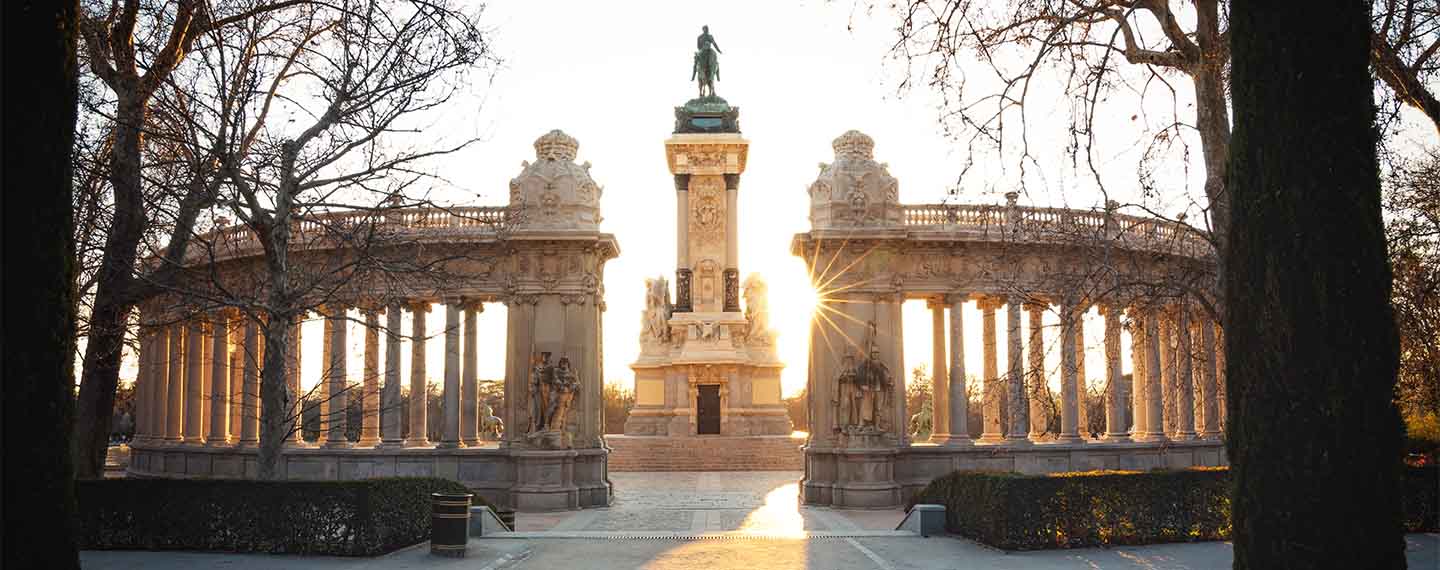Spain’s transition to democracy after dictator Franco’s death in 1975 and the country’s profound, political, economic and social transformation are widely regarded as something of a model of their kind, but the country today does not function as it should or could, argues Michael Reid cogently in his book, Spain: The Trials and Triumphs of a Modern European Country (Yale University Press) published this month.
As befits a long-time writer and editor at The Economist, including a recent stint as the Spain correspondent (2016-21) and for many more years author of the Bello column on Latin America, the book is tightly and elegantly written, wide ranging, with a deep sense of history and insightful. Reid first came to Spain in 1971 as an Oxford university student and either directly or from afar has been a close observer of the country.
In some aspects, such as same-sex marriage, abortion, euthanasia and, most recently, menstrual leave, Spain has been in the vanguard, but in other areas the country has stood still for the past decade, hampered by deep political polarisation and fragmentation. As Reid points out, Spain is not alone among democracies (the UK is a prime case) in suffering from ‘hubris, austerity, populism, polarisation, poor leadership and the struggle to adapt to a rapidly changing world of globalisation and technological change’. Spain’s ills, he says, are not ‘principally due to any original sin surrounding the birth of its democracy’ and it is not ‘burdened by an atavistic exceptionalism nor by Franco’s ghost’.
Spain’s unravelling can be dated to 2008 (some put it further back) with the bursting of a massive property bubble, followed by a major banking crisis, years of recession, a new mould of politics, as of 2015, with the emergence of disruptive parties on the hard right (VOX) and hard left (Unidas Podemos), which eroded the essentially two-party system of the Popular Party and the Socialists of the previous 33 years, and the unconstitutional referendum on Catalan independence in 2017.
It used to be said ad nauseam, particularly by liberals during the Franco regime (1939-75), that the answer to Spain’s ills lay in José Ortega y Gasset’s famous dictum of 1910: ‘Spain is the problem, Europe is the solution’. But this is no longer so: Spain joined the EEC in 1986, which anchored democracy, and has done very well from membership, notably in the field of funds that have transformed the infrastructure.
The solution to today’s ills lies squarely with a political class that is sadly far more polarised than society as a whole (the admirable consensus spirit of the transition years is long gone). The deep partisan divide prevents even minimum agreements on issues for the good of the country, such as education (eight reforms in 40 years and none of them based on consensus) and likewise on the pay-as-you-go pensions system. Spain needs ongoing reform and not a tearing up of the 1978 Constitution, which in 2025 will be the oldest in Spain’s history, surpassing the one between 1876 and 1923.
Two of the book’s 10 chapters are devoted to Catalonia, one charts how the illegal referendum came about in 2017 and the other looks at the region’s history and its false claims to nationhood and statehood. Reid is good at contextualising. For example, he reminds us that Spain’s constitutional protection of the nation’s territorial integrity is the norm in continental Europe (the US, also, does not allow secession), while Article 155 of the constitution activated by Mariano Rajoy, the Popular Party Prime Minister at the time of the referendum, to suspend Catalan autonomy and impose direct rule is similar to Article 37 of Germany’s Basic Law.
The book has some telling personal anecdotes. When covering Catalonia’s independence movement, Reid found it hard to keep a straight face when hearing officials from the regional government ‘solemnly compare Catalonia with war-ravaged Kosovo or Lithuania as it emerged from Soviet totalitarianism’. Nevertheless, he recognises that for several centuries Catalonia was treated in ‘heavy-handed and oppressive ways’ by successive governments, including the excessively violent police response to those who voted in the illegal referendum. ‘The rest of Spain needs to accept that Catalanism is a valid sentiment, and not inherently subversive’. The pardons for the jailed secessionists were necessary.
The Catalan government’s control over education (subjects are predominantly taught in Catalan) fosters an atmosphere sympathetic to secession, as does the biased coverage of the nationalist cause by TV3, a public television channel in Catalan. Catalonia, with its own language, has a good claim, however, to be a cultural nation, but as Reid points out the world has some 6,000 languages but only around 200 nation states.
In an interesting chapter titled ‘Why Spain is not France’ he looks at the reasons behind Spain’s lack of cultural uniformity compared to that of its neighbour. One factor is that Spain’s nation-building efforts and investment in transport links (Spain is the most mountainous country in Western Europe after Switzerland and a big country) in the 19th century were undermined by an impoverished state. As late as 1910, nearly half of the 9,200 villages and small towns were still inaccessible by road. Another factor behind the resurgence of regional languages and feeling in Spain was that whereas in France the regions that retained their languages and cultural identity tended to be the poorest and most remote, in Spain they were and are the most dynamic and wealthiest parts of the country.
A truly federal system in Spain, not the re-centralisation sought by VOX, by clearly demarking powers and rules for resolving disputes would go a long way toward ending the permanent tug of war over powers between some regions and the national government. For this to happen, the senate, a largely purposeless and toothless body and a retirement home for midlevel politicians, needs to be turned into a chamber representing the regions.
Another toothless body that needs to be reformed, and which Reid does not mention, is the Tribunal de Cuentas, the body responsible for auditing public sector accounts and scrutinising those of political parties. Its 12 members are appointed by parliament with a majority of 3/5 for nine years, effectively enabling politicians to colonise it. Given that a lot of Spain’s corruption is related in one way or another to the financing of political parties, a much more effective, proactive and independent tribunal would go some way toward mitigating this problem.
The tribunal’s reports on parties’ financial statements are published with considerable delays of up to five years, which makes it difficult for the judicial system to conduct any monitoring since most infractions of the regulations discovered are by then prescribed under the statute of limitations (five years for very serious offences, three for serious and two for minor ones). The report covering 2017 was published in February 2022.
A more effective watchdog is the Independent Authority for Fiscal Responsibility (AIReF), perhaps because it was created (in 2013) at the behest of the European Commission, but it has no capacity to make the government comply with fiscal rules or its own commitments.
The process for electing members of the General Council of the Judiciary (CGPJ), the body that makes judicial appointments and oversees the system, is inordinately politicised. Initially, 12 of the 20 members were chosen by judges themselves and eight by Congress until the Socialist government in the 1980s changed the system and had all 20 members chosen by a qualified majority of the Congress (by agreement between the Socialists and the Popular Party, as the two main parties). This reform was justified on the basis that at that time most judges were still those appointed by Franco and thus were inherently conservative. This is no longer the case. The Council’s mandate expired in December 2018 and since then the two main parties have indulged in ugly squabbling in public about how members should be appointed. The best way to resolve the dispute, which will almost certainly not be resolved before the next general election, due by the end of the year, would be to follow the Council of Europe’s recommendation and have at least half the members elected by their peers.
Spain has far too many politicians. Estimates puts the number at between 300,000 and 400,000 based on the four levels of government (unique in the EU): central, regional, municipal and the provincial diputaciones. Up to 20,000 public service jobs are discretionary political appointments who can be hired or got rid of at the whim of political masters. Spain is one of the very few OECD countries where all or a high proportion of positions change systematically in the top two echelons of senior civil servants (D1 and D2 levels) after the election of a new government.
More internal democracy in political parties, something accentuated by the ‘closed’ as opposed to the ‘open’ list electoral system in which voters can only choose a party as a whole rather than a particular candidate (political leaders decide where to place candidates on the list), would reduce the disconnect between the political class and the public. The higher up a person is on the list, the better the chances of being elected. Closed party lists give excessive power to a party’s apparatus at the expense of accountability, stifle independent and minority opinion within the party’s ranks and tend to make MPs sycophantic. As Alfonso Guerra, a former Socialist Deputy Prime Minister (1982-91) who kept an iron grip on the party, said, quoting the Mexican labour leader Fidel Velázquez: ‘Move and you’re out of the photograph’.
Reid sees the plight of young adults as perhaps the biggest problem facing the country. The intergenerational gap is particularly acute in Spain. Unemployment among those aged 15 to 24 in the dysfunctional labour market is still stubbornly high at close to 30% (it peaked at 57% in 2013) and without substantial family support getting on the property ladder, in a country where most people are owner-occupiers, is a largely unfulfilled dream for many. But for the thankfully still strong Spanish family network, the bedrock of society, the patience of these people might already have snapped.
Older generations, in comparison, are relatively well looked after by the welfare state. The state pension system, however, looks unsustainable in its current form.
Life expectancy is one of the highest in the world, pensions are relatively generous (well above the OECD average based on the percentage of average earnings) and the baby boom happened later in Spain (between the late 1950s and the late 1970s) and will swell the number of pensioners. It remains to be seen whether the reforms announced this month will make the system more sustainable.
Reid’s book deserves to last as long as his favourite tree in Madrid’s Retiro park (one of the book’s dedicatees): a Mexican conifer (ahuehuete).



